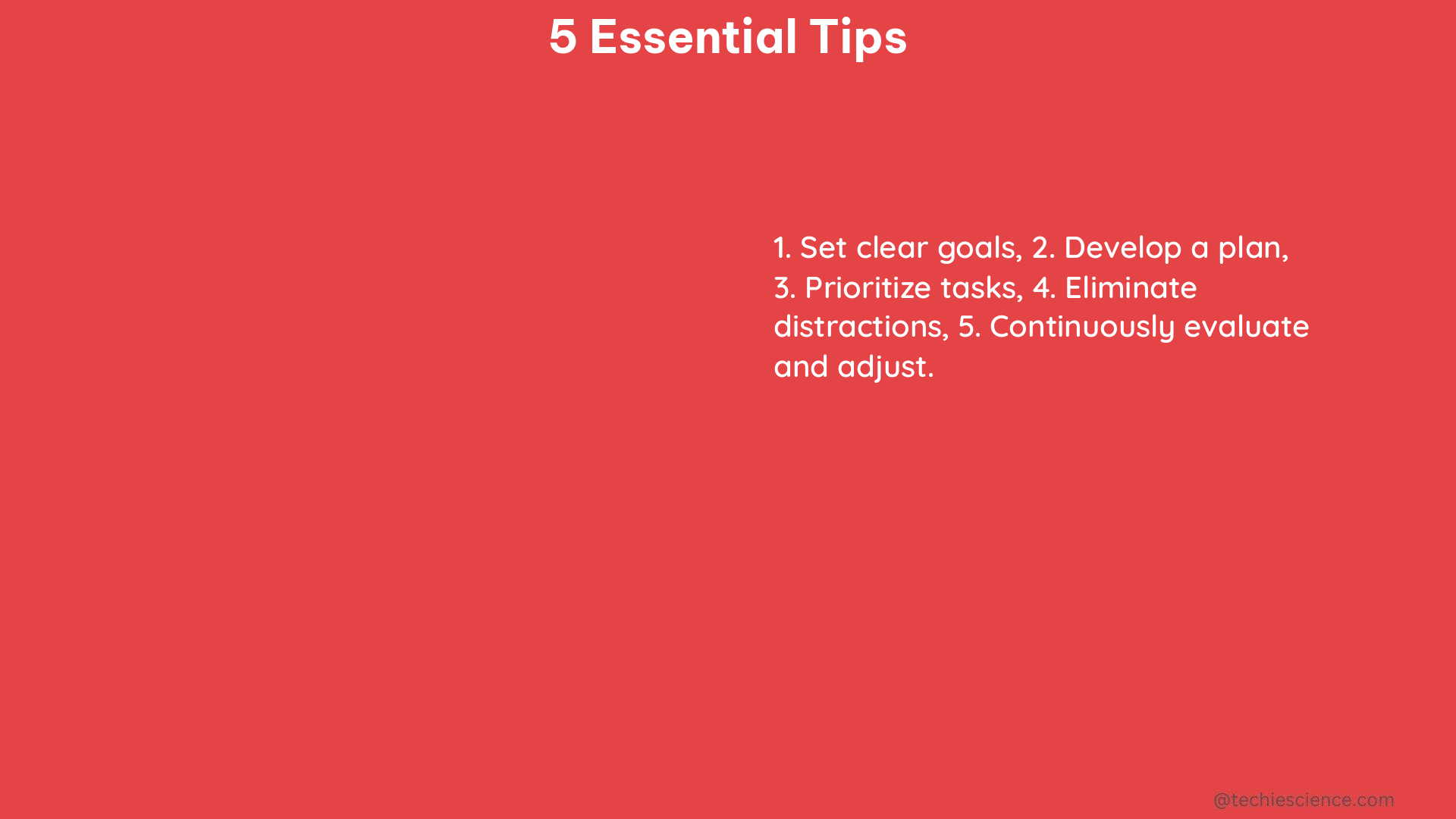Setting and achieving measurable goals is crucial for any individual or organization looking to drive progress and success. This comprehensive guide provides 5 essential tips to help you define, track, and accomplish your objectives effectively.
1. Define Specific, Measurable, Achievable, Relevant, and Time-bound (S.M.A.R.T.) Goals
Crafting well-defined goals is the foundation for achieving measurable success. When setting your objectives, ensure they adhere to the S.M.A.R.T. framework:
Specific: Be clear and unambiguous about what you want to accomplish. For example, instead of “Increase sales,” a specific goal would be “Increase monthly sales revenue by 20% within the next quarter.”
Measurable: Quantify your goals with clear metrics and data points to track progress. This could include revenue targets, customer acquisition numbers, or key performance indicators (KPIs).
Achievable: Assess whether your goal is realistically attainable given your current resources, skills, and constraints. Stretch goals are good, but they should still be within reach.
Relevant: Ensure your goals align with your broader organizational or personal objectives. They should contribute to your long-term vision and priorities.
Time-bound: Establish a clear timeline for achieving your goal, including interim milestones. This creates a sense of urgency and helps you stay on track.
To illustrate, a well-crafted S.M.A.R.T. goal could be: “Increase website traffic by 30% within the next 6 months, as measured by monthly unique visitors.”
2. Collect and Analyze Data Regularly

Effective goal-setting and tracking requires a data-driven approach. Regularly collect and analyze both qualitative and quantitative data to inform your decision-making:
Qualitative Data: Gather insights from customer interviews, focus groups, and user feedback to understand their needs, pain points, and perceptions.
Quantitative Data: Track key metrics such as sales figures, website analytics, customer churn rates, and marketing campaign performance.
Analyze historical data to identify trends and patterns that can help you set more accurate and informed goals. Continuously monitor and adjust your goals based on industry changes, market conditions, and customer behavior.
3. Set Key Performance Indicators (KPIs) to Measure Progress
KPIs are quantifiable measures that help you track the progress and success of your goals. When selecting KPIs, consider the following:
Relevance: Ensure your KPIs are directly tied to your overall objectives and provide meaningful insights into your performance.
Measurability: Choose KPIs that can be easily quantified and tracked, such as revenue, customer satisfaction scores, or lead conversion rates.
Actionability: KPIs should be within your control and influence, allowing your team to take concrete actions to improve them.
For example, if your goal is to increase customer retention, relevant KPIs could include monthly churn rate, average customer lifetime value, or the percentage of customers who renew their subscriptions.
4. Write Measurable Outcomes, Not Outputs
When setting goals and key results, focus on measurable outcomes rather than just outputs or activities. Outcomes are the tangible changes or improvements you want to achieve, while outputs are the tasks or actions completed.
For instance, instead of setting a goal to “Publish 10 blog posts per month,” a more outcome-focused goal would be to “Increase website traffic by 20% through high-quality content creation.”
Regularly review and update your key results to ensure they are truly measuring the value and impact of your efforts, not just the effort itself.
5. Make Key Results Actionable and Time-bound
To ensure your goals are achievable, make your key results (the specific, measurable steps to reach your goals) actionable and time-bound:
Actionable: Craft key results that your team can independently work on and accomplish with their own ideas and plans. Avoid overly dependent or seemingly impossible key results.
Time-bound: Set key results with clear deadlines, typically aligned with a quarterly cycle. This creates a sense of urgency and helps maintain momentum.
For example, a time-bound, actionable key result could be: “Increase the conversion rate of the new landing page by 15% within the next 3 months.”
By following these 5 essential tips, you’ll be well on your way to setting and achieving measurable goals that drive meaningful progress for your business or personal endeavors.
References:
– Setting Key Results: A Guide to Objective and Key Results (OKRs)
– How Do You Set Goals with Data?
– What Steps Do I Take to Set Achievable, Measurable Goals?
– How to Write SMART Goals
– How to Write SMART Goals
